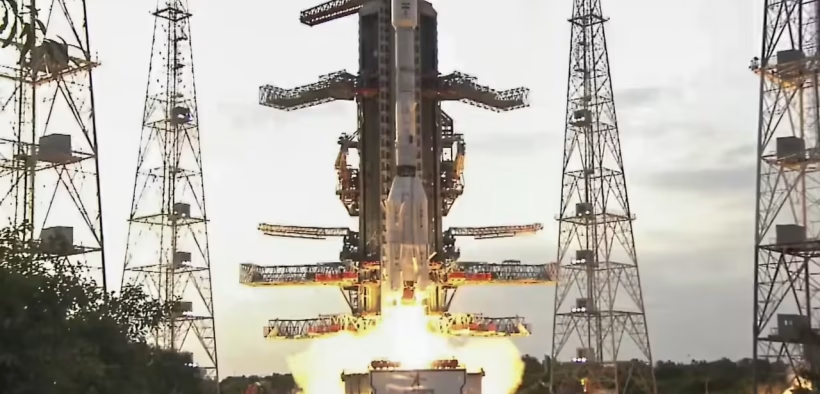On July 30, 2025, at 5:40 PM IST, the three-stage GSLV‑F16 rocket lifted off from Satish Dhawan Space Centre, aboard which the NISAR satellite—jointly developed by ISRO and NASA—ascended into orbit. Approximately 19 minutes after liftoff, NISAR was precisely injected into a circular sun‑synchronous orbit at an altitude of about 747 km.
Advertisements

NISAR carries dual-frequency Synthetic Aperture Radar (SAR) capabilities—L‑band from NASA and S‑band from ISRO—mounted on a deployable 12 m reflector. This “two‑eyed” configuration enables seamless Earth monitoring, unaffected by weather or daylight. The satellite will scan the entire land and ice‑covered surfaces every 12 days, detecting ground motion of just a few millimetres using the advanced SweepSAR technique.
Weighing around 2,393 kg, NISAR represents a $1.5 billion investment and a decade of scientific collaboration. It marks the first GSLV mission dedicated to radar Earth observation, and it’s also the 102nd mission launched from Sriharikota.
Applications & Significance
The satellite’s data is crucial for climate science, disaster response, agriculture, land deformation studies, sea‑ice and glacier tracking, and monitoring forests, wetlands, soil moisture, subsidence, and volcanic or seismic activity. According to ISRO and India’s Science Minister, the mission will be a “game changer” for disaster preparedness, enabling timely action on floods, cyclones, earthquakes, and more.
Operational control is divided: ISRO leads satellite operations and commanding, while NASA manages orbit maneuvers and radar planning. Ground stations in both countries will receive and process the data, which will then be shared with the global research community. A 90‑day commissioning (In‑Orbit Checkout) phase will precede full mission use.
This mission not only deepens Indo‑US space cooperation but also sets new benchmarks in cost‑effective, high‑impact satellite technology. With its unmatched precision and global coverage, NISAR stands poised to transform how we observe and respond to Earth’s changes.

